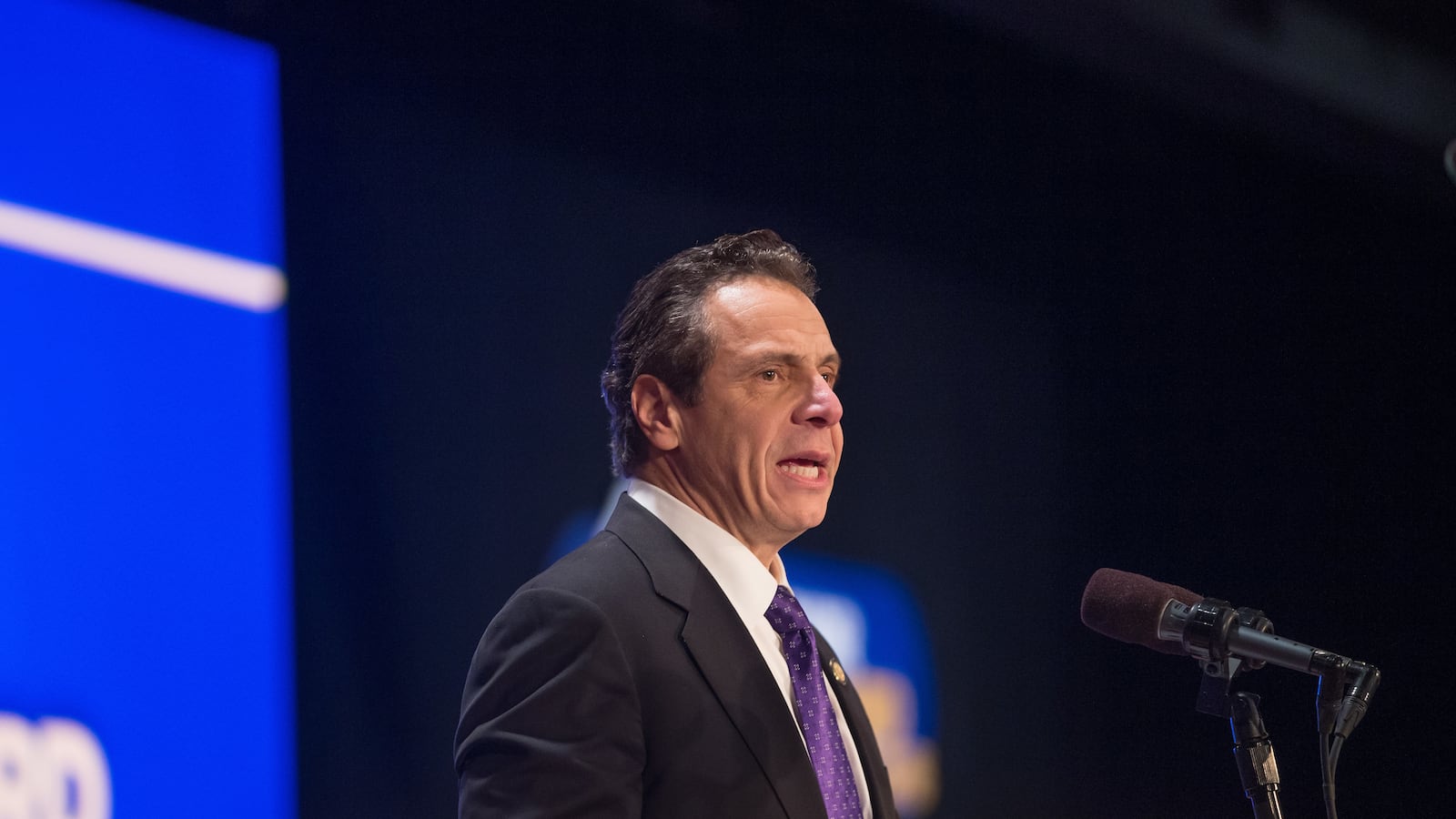Gov. Andrew Cuomo scarcely mentioned education in a lengthy speech Wednesday laying out his policy agenda for the coming year — a marked contrast to previous years when his splashy or controversial education plans made headlines.
In his more than 90-minute State of the State address, Cuomo devoted just a few minutes to education, during which he mainly proposed expanding existing initiatives involving college scholarships, pre-kindergarten, and after-school programs. Unlike in the past when he promoted tougher teacher evaluations, the Democratic governor’s education latest agenda is generally in line with policies favored by progressive voters and teachers unions — factors that may help him as he runs for a third term as governor this fall and mulls a presidential run in 2020.
Two new education plans he’s pushing this year — increased access to school meals and protections for student-loan borrowers — had been previewed by his office ahead of the speech.
While he vowed to maintain a “historic investment” in the state’s schools, he also acknowledged that New York faces “a federal and economic challenge never experienced before” — including a projected $4.4 billion state budget deficit, a federal tax overhaul that targets high-tax states such as New York, and possible federal-funding cuts.
With an eye toward Washington, Cuomo promised to challenge the new tax law in court. And in his call for New York to continue to invest heavily in education — the state spends more per pupil than any other in the nation — he also suggested that poorer districts should get a larger share of that money, which advocates have long sought.
“We must address education funding inequities and dedicate more of our state’s school aid to poorer districts,” Cuomo said. “Trickle-down economics doesn’t work, nor does trickle-down education funding.”
Cuomo will follow up on his speech, which came with a 374-page policy book, with a spending plan that is due by Jan. 12. Then he must negotiate a final budget with state lawmakers, some of whom have already expressed concerns about raising taxes or increasing spending.
“Spending restraint should be a top priority,” said Senate Majority Leader John Flanagan, a Republican, in a statement Tuesday.
Here are the main education items in the governor’s proposal:
Fight student hunger: Cuomo put forward an anti-hunger plan to make sure students are well-fed and ready to learn.
The plan would ban “lunch shaming,” where some schools single out students who cannot pay for lunch, and would require schools where 70 percent of students are eligible for free or reduced-priced lunch to provide breakfast after the school day has begun. It also encourages the use of locally grown produce in school meals and would require all public colleges and universities to have food pantries or an arrangement with outside food banks.
Earlier this year, New York City Mayor Bill de Blasio unveiled a plan to provide free lunch to all public school students regardless of family income. The city also offers free in-classroom breakfast for all elementary school students.
Help students pay for college: Cuomo announced several new protections for student-loan borrowers. The proposal would put new restrictions on student-loan providers, forbid the suspension of professional licenses for those who default on their loans, and provide students with more information about paying for school each year.
The proposal comes after Cuomo scored a key legislative victory last year with passage of the “Excelsior” scholarship, a plan to provide free tuition at in-state colleges for middle-income families. In the second year of the program, students from a wider range of families will be eligible for the scholarships, which Cuomo said will cost $118 million.
Train teachers in computer science: A new $6 million grant program would pay for teacher training in computer science and engineering. Mayor de Blasio’s plan for every New York City student to learn the basics of computer science will require about 5,000 trained teachers, city officials have estimated.
Expand existing initiatives: The bulk of Cuomo’s 16 education-specific plans are expansions of existings efforts. Many of them — including pre-K, after-school programs, and student mental-health services — overlap with initiatives already underway in New York City.
- Pre-K: $15 million to grow the state’s prekindergarten offerings, which Cuomo launched in 2013 and has expanded each year. That is close to the $20 million that the state Board of Regents requested for preschool seats this year. Cuomo’s plan would add pre-K seats for both 4- and 3-year-olds — which could be good news for Mayor de Blasio, who is seeking state funding for his own “3-K” program.
- After-school programs: $10 million to fund a second round of competitive grants to fund after-school programs in high-poverty areas, which included the Bronx last year. This round, a portion of the grants will be reserved for districts with high levels of student homeless or gang activity.
- “Early college” high schools: $9 million to create 15 additional high schools where students can earn some college credit or associate’s degrees.
- “Master teachers”: $1 million to give select teachers in high-poverty districts an annual stipend along with extra training, which Cuomo says will help draw effective teachers to high-needs schools.

